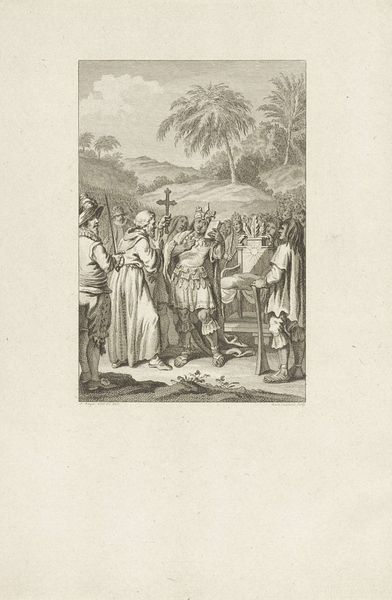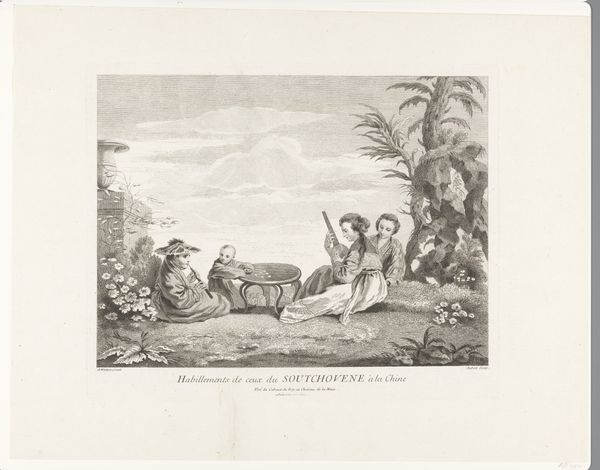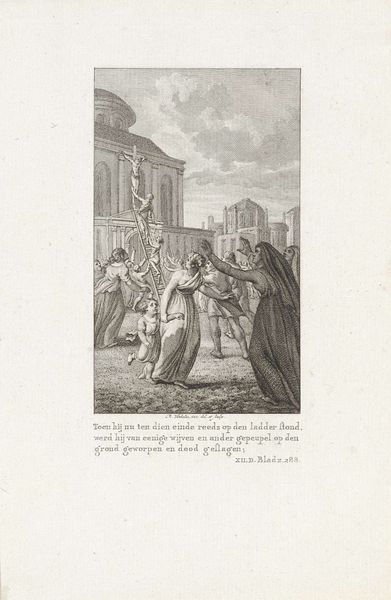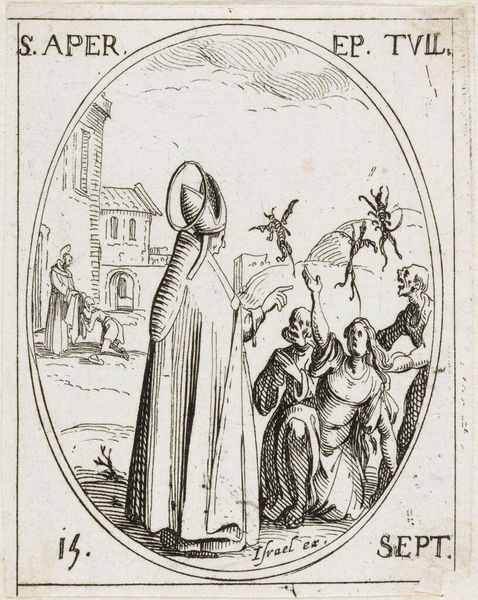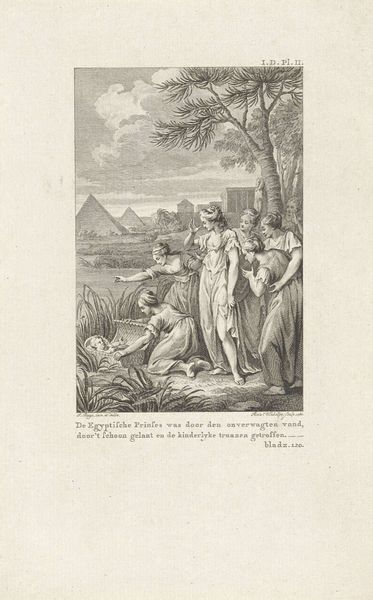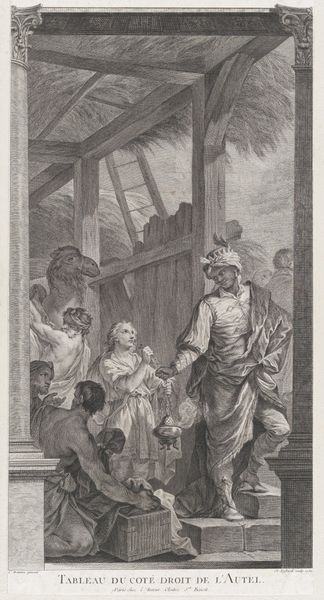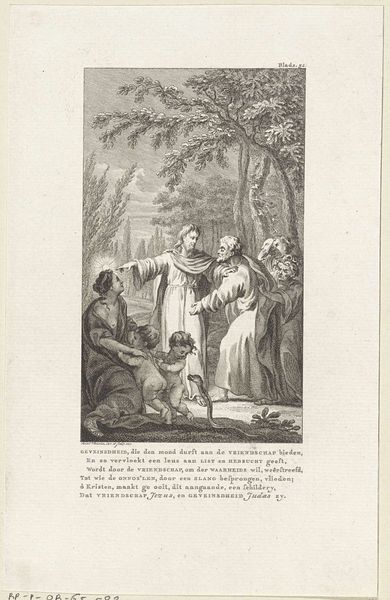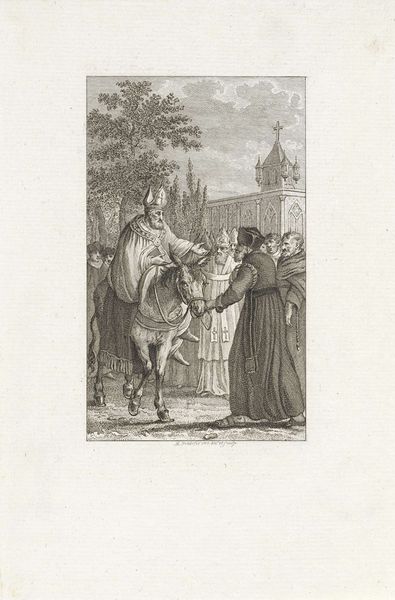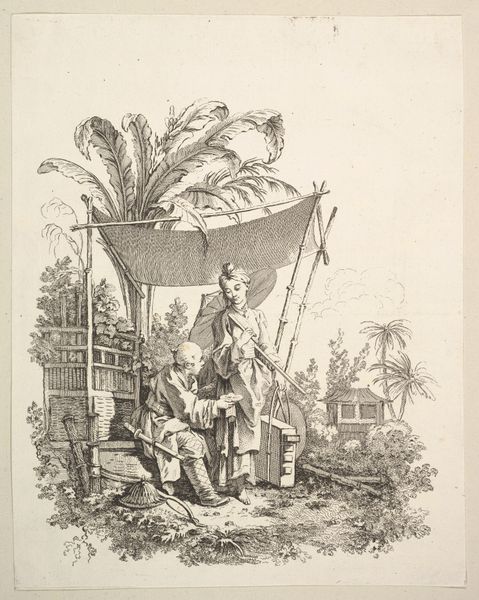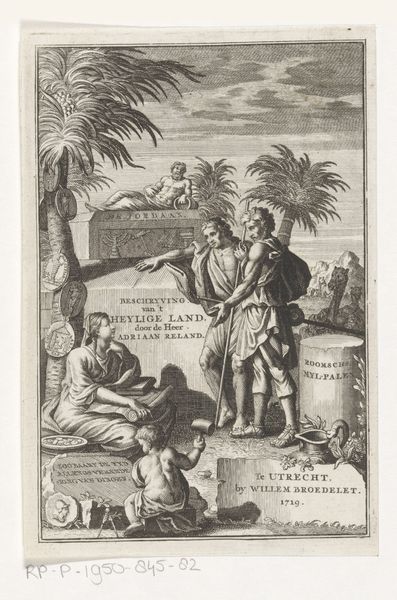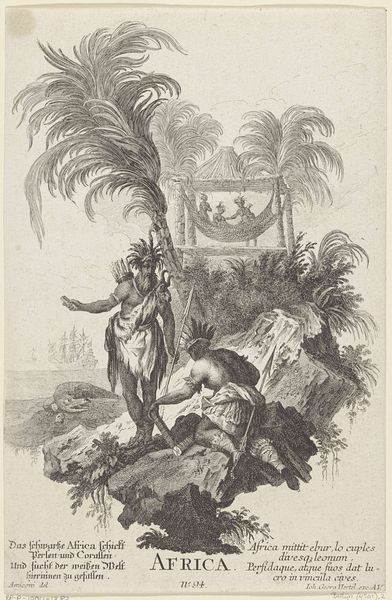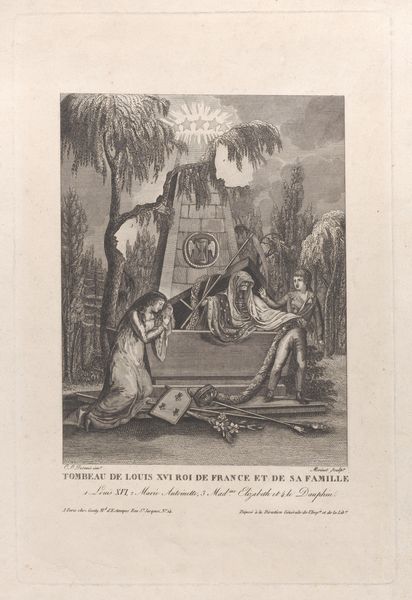
Dimensions: height 239 mm, width 158 mm
Copyright: Rijks Museum: Open Domain
Editor: Here we have Reinier Vinkeles' etching "Mucius gooit zijn zoon in een rivier" from 1803, here at the Rijksmuseum. It depicts a rather shocking scene - a man in robes is throwing what appears to be a child into a river! What do you make of this, especially given the time it was created? Curator: This piece, on the surface, is a depiction of a historical scene. But if we situate it within the broader context of the late 18th and early 19th centuries, a period of revolution and shifting power structures, it becomes more complex. Who exactly *is* Mucius in this context, and what societal anxieties might this image be playing upon? What statement do you think the image makes about control, and power in general? Editor: Well, throwing your son into a river seems like an ultimate act of control, or maybe desperation? Is it possible to see the river as a symbol for a more progressive future washing away traditional hierarchies, even through violence? Curator: Exactly! And the artist's choice to depict this particular moment from the historical narrative is key. By choosing to highlight a father's apparent sacrifice, or even destruction, of his own child, Vinkeles opens up questions about inherited power, the rights of the individual versus the collective, and the potential for radical breaks with the past. What impact might this image have on ideas about governance, specifically who is fit to govern and by what rights do they justify those claims to power? Editor: So it’s less about the literal act, and more about what that act *represents* during a period of societal upheaval. That reframes the piece completely for me. I can see how situating this etching historically provides so many more possible interpretations of its meanings and impacts. Curator: Precisely! And considering the societal context allows us to reflect on the enduring and shifting ways images impact historical narratives. Thanks for helping make this etching more transparent for the listening public!
Comments
No comments
Be the first to comment and join the conversation on the ultimate creative platform.
